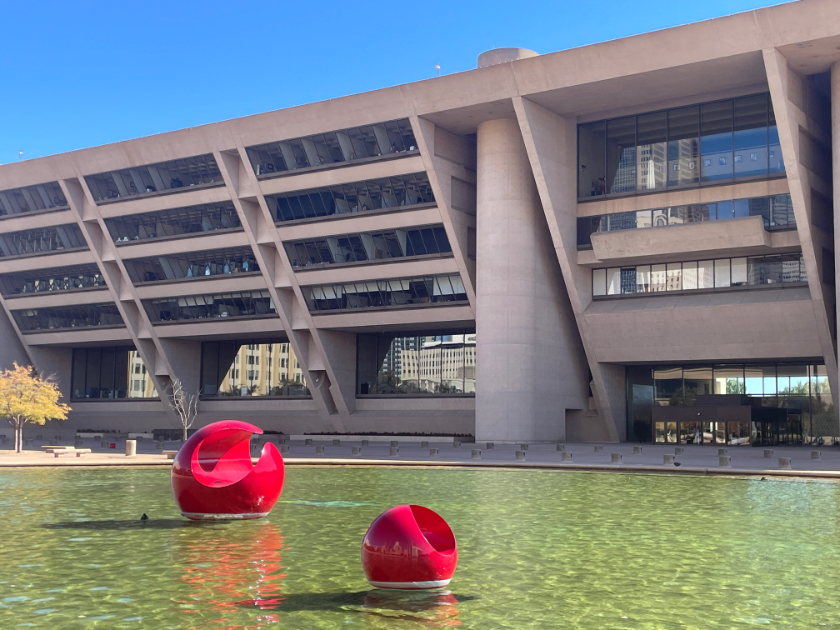 Credit: Karen Eubank for CandysDirt.com
Credit: Karen Eubank for CandysDirt.com
As the unprecedented rush to determine the fate of Dallas City Hall unfolds, I’ve been reaching out to the people we should be listening to. Those who possess the education, experience, and knowledge about architecturally significant buildings — architects.
This is not a decision that should be made based on economic gain. In fact, it should never have even become a discussion. But here we are, so let’s listen to the professionals before tonight’s public meeting at 6 p.m. at City Hall, 1500 Marilla St. We hope everyone will voice their opinions on the fate of this historically and architecturally significant building, one that is globally recognized and a defining feature of our city.
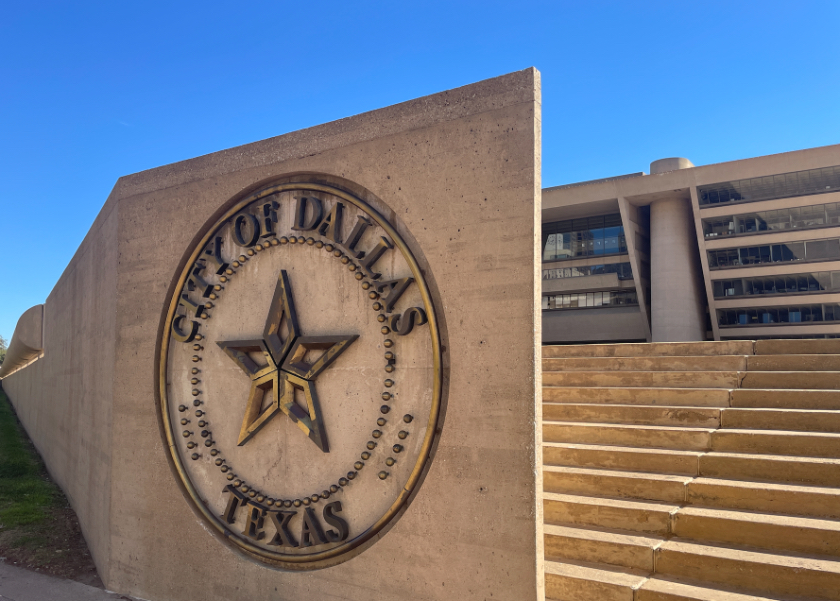 Credit: Karen Eubank for CandysDirt.com
Credit: Karen Eubank for CandysDirt.com
Max Levy, FAIA
The Dallas City Hall, together with its Plaza, is arguably the finest example of Modern civic architecture in the country. It is unlikely that the City has the artistic commitment and budget to replace this distinguished work at the same level of excellence. To demolish it on the basis of practicality and efficiency would be a bewildering episode of civic effacement. Repair and restore it, inhabit it with sensitivity and gratitude for its uplifting proportions and civic atmosphere.
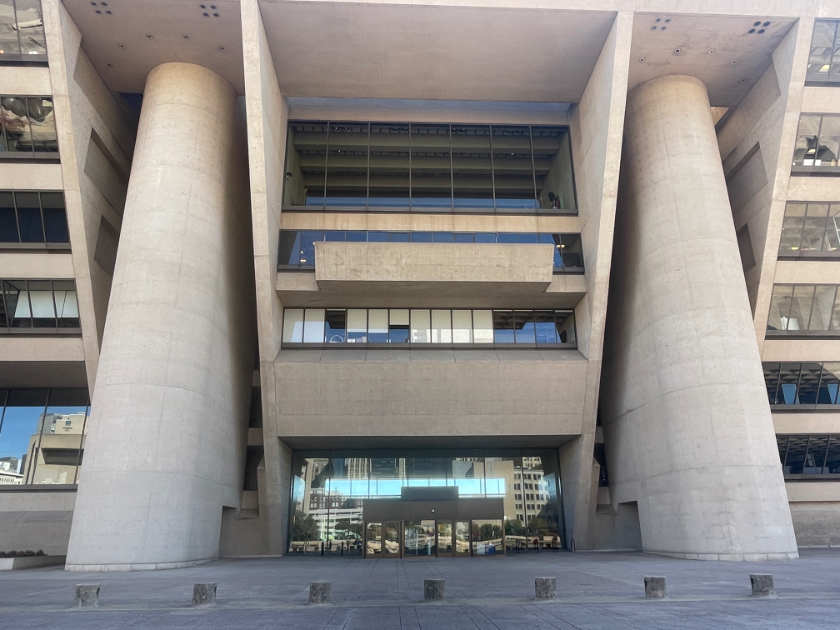 Renowned architect I.M. Pei designed Dallas City Hall to be impressive, dramatic, and impactful. It is all of those things. Credit: Karen Eubank for CandysDirt.com
Renowned architect I.M. Pei designed Dallas City Hall to be impressive, dramatic, and impactful. It is all of those things. Credit: Karen Eubank for CandysDirt.com
Cliff Welch FAIA
It would be incredibly shortsighted to lose such an iconic piece of Dallas’s history and culture from an architect as influential and respected as I.M. Pei.
Willis Winters, FAIA
The suggestion to demolish an internationally renowned public building to make way for a basketball arena is preposterous and should be firmly rejected. Civic landmarks are not fungible assets to be replaced by private entertainment venues. The value of City Hall as a symbol of democracy, history, and architectural achievement far exceeds any hypothetical benefit of an arena in this location.
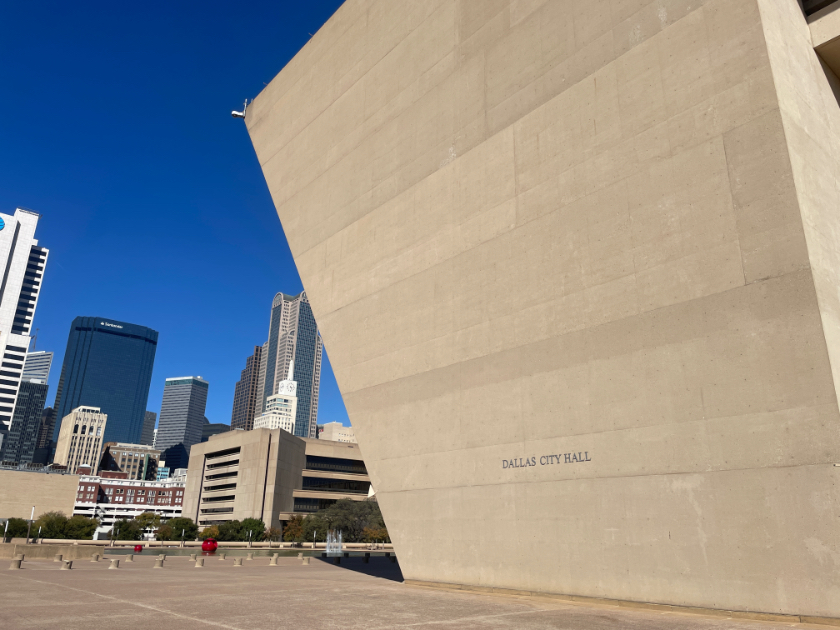 Credit: Karen Eubank for CandysDirt.com
Credit: Karen Eubank for CandysDirt.com
Norman Alston, FAIA
Dallas City Hall embodies everything that architecture should. It is a direct result of Dallas desperately seeking to reshape and rebrand itself after the Kennedy assassination. It is the first and probably the purest representation of those efforts that was ever accomplished. The Plaza was designed to bring the community together. The architecture was designed to be bold and progressive, and it was, whether you like it or not.
In the 1970s, it was an internationally recognized and important building, and by 1970s standards, it was transparent. They were absolutely going for the theme of government transparency. It’s not a disposable building. It was not meant to be here for only 50 years and tossed.
We don’t have enough specific information to detail it. The actual repair numbers are not north of $300 million. We could fix everything at Fair Park for that.
It’s a great building at any level. There is no justification for tearing it down. Fix what is broken.
 Credit: Karen Eubank for CandysDirt.com
Credit: Karen Eubank for CandysDirt.com
Stephen B. Chambers, AIA
The Brutalist inverted pyramid by I.M. Pei is a bold and provocative gesture that we have too little of in Dallas. It’s not just another forgettable shiny glass object. It invites thought, conversation, and opinions. It’s unforgettable and dynamic.
Eddie Maestri, AIA
As an architect, I believe tearing down buildings, especially ones of civic and architectural significance, is often a very shortsighted decision. Throughout history, we’ve seen how structures that fall out of favor in one era are later recognized for their cultural or design importance. Think of the loss of New York’s original Penn Station or the urban renewal projects of the 1960s that erased so much early-20th-century architecture. Beyond the historical implications, demolition can be inherently wasteful and far from sustainable. Preserving and adapting our existing civic buildings is almost always the greener, wiser, and more forward-thinking approach.
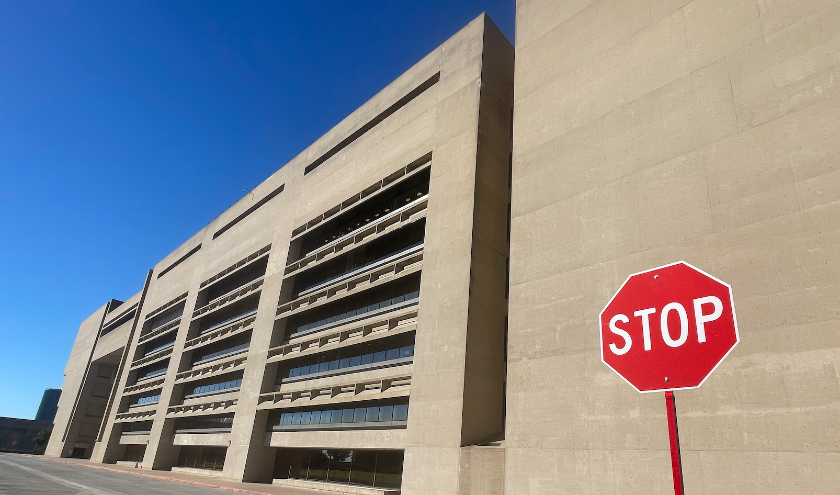 Photo by Karen Eubank for CandysDirt.com
Photo by Karen Eubank for CandysDirt.com
Carl Elefante, former president of the American Institute of Architects
“The greenest building is… one that is already built.” This concept encapsulates the idea of “embodied energy,” which refers to the investment of materials and energy in existing buildings.
